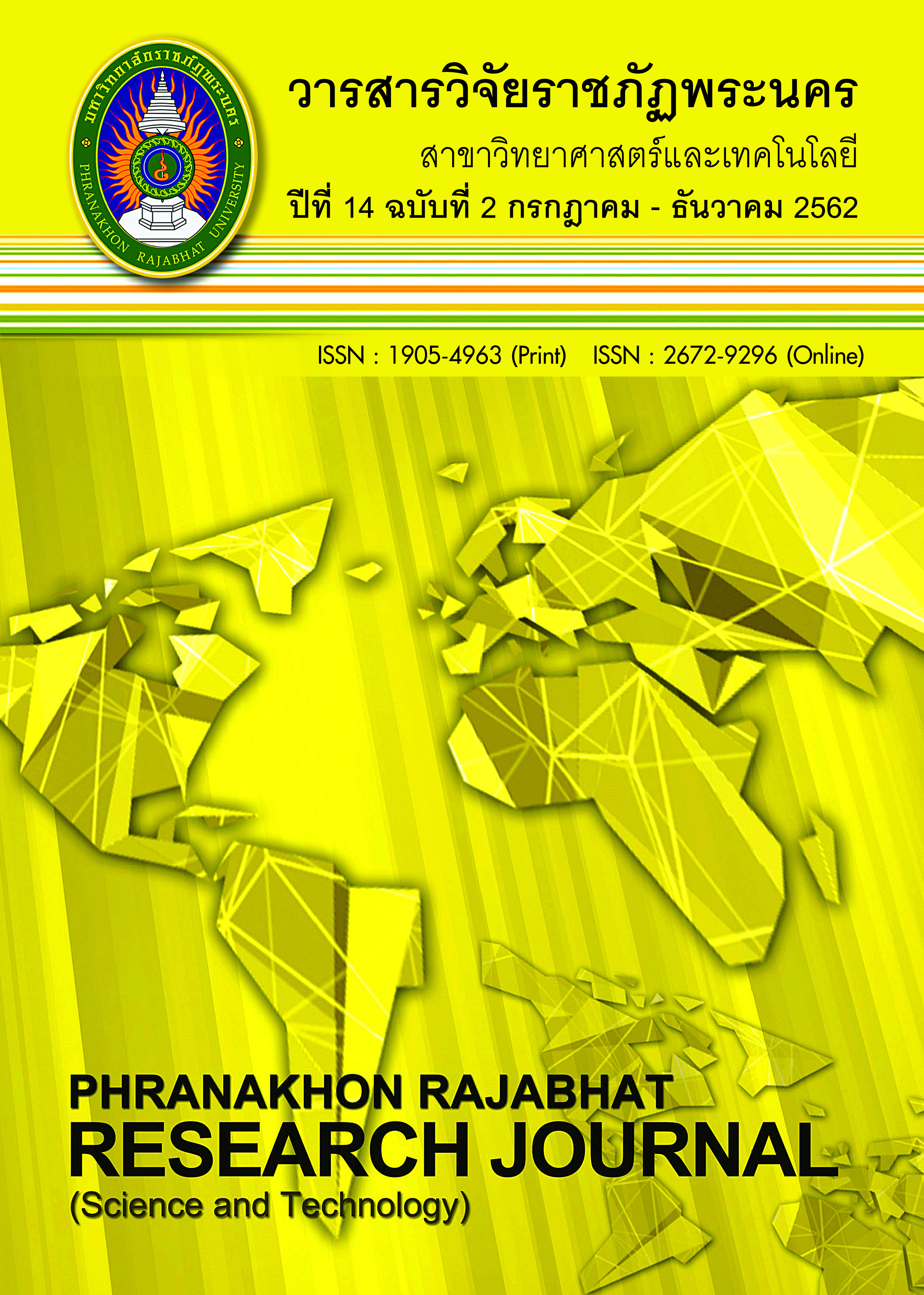VERMICOMPOSTING: BIOLOGICAL TECHNOLOGY FOR SOIL CONSERVATION AND ORGANIC WASTES MANAGEMENT IN THAILAND
Keywords:
Biological technology, Vermicomposting, Organic wastes, Nature-friendlyAbstract
In Thailand, vermicomposting is an innovative sustainable technology for organic and agricultural waste treatment which is a natural process of quick recycling of organic material into nutrient rich compost using earthworms such as Eudrilus eugeniae under aerobic condition. It is an eco-friendly non-toxic product, low cost, less mechanized, easy operation and uses low energy input during processing etc. This process adopted for improvement of soil damage in the developed countries have sparse chances of success. Thus, it has become imperative to resort to simpler alternative technologies. The vermicompost from various organic wastes was evaluated to find out the best organic raw material for quality vermicompost production enhanced high essential nutrients for plants, good microorganisms grow for plant growth hormones and soil management. Also, vermicompost process benefits organic and agricultural wastes management for smart farmer and agricultural safety and health in Thailand.
References
Dominguez J. & Edwards C.A. (2004). Vermicomposting organic wastes: A review. In: Shakir Hanna S.H., Mikhail W.Z.A. (eds) Soil zoology for sustainable development in the 21st century., Cairo, pp.369-395.
Edwards C.A. and Bohlen P.J. (1996). Biology and Ecology of Earthworms. Third edition London: Chapman & Hall.
Edwards C.A. (2004). Earthworm ecology. Second edition The United States of America: CRC Press.
Edwards C.A., Arancon N.Q. & Sherman R. (2011). Vermiculture technology: Earthworms, organic wastes and environmental management. The United States of America: Taylor and Francis Group.
Gajalakshmi S., Ramasamy E.V. & Abbasi S.A. (2001). Assessment of sustainable vermiconversion of water hyacinth at different reactor efficiencies employing Eudrilus engeniae Kingburg. Bioresour Technol. 80,131–135.
Gajalakshmi S., Ramasamy E.V. & Abbasi S.A. (2002). Vermicomposting of paper waste with the anecic earthworm Lampito mauritii Kingburg. Indian J Chem Technol. 9, 306–311.
Gajalakshmi S. & Abbasi S.A. (2004). Earthworms and vermicomposting. Indian J. of Biotechnology. 3, 486-494.
Gopal M., Gupta A., Sunil E. & Thomas V.G. (2009). Amplifacation of plant beneficial microbial communities during conversion of coconut leaf substrate to vermicompost by Eudrilus sp. Current Microbiology. 59, 15-20.
Klangkongsub S. & Sohsalam P. (2013). Vermicompost production by using tomato residue and yard waste. Journal of Medical and Bioengineering. 2, 270-273.
Lazcano C., Gomez-Brandon M. & Dominguez J. (2008). Comparison of the effectiveness of composting and vermicomposting for the biological stabilization of cattle manure. Chemosphere. 72, 1013–1019.
Madsen E.L. & Alexander M. (1982). Transport of Rhizobium and Pseudomonas through soil. Soil Science Society of America. 46, 557-560.
Paoletti M.G., Faveretto M.R., Stinner B.R., Purrington F.F. & Bater J.E. (1991). Invertibrates as bioindicators of soil use. Agriculture Ecosystem Environment. 34, 341-362.
Pathma J. & Sakthivel N. (2012). Microbial diversity of vermicompost bacteria that exhibit useful agricultural traits and waste management potential. SpringerPlus. 26, 1-19.
Prasitket J., Chuvorrivate N., Ruengnab M., Padung T., Choulvanapong P. & Reanjareang S. (2005). Organic fertilizer: Production, utilization and quality. Department of Agriculture. pp.87.
Rouelle J. (1983). Introduction of an amoeba and Rhizobium Japonicum into the gut of Eisenia fetida (Sav.) and Lumbricus terrestris L. In: Satchel1 J.E. (ed) Earthworm Ecology: From Darwin to Vermiculture. NewYork: Chapman
and Hall.
Sailila N., Bakar A.A., Mahmood N.Z., Siliva J.T., Abdullah N. & Jamaludin. (2010). Nutrient elements of different agricultural wastes from vermicomposting activity. Dynamic Soil, Dynamic Plant. 4, 155-158.
Sharma, S., Pradham, K., Satya, S. & Vasudevan, P. (2005). Potentiality of earthworms for waste management and in other Use-A Review. Journal American Science. 1, 4-16.
Sinha, R.K., Agarwai, S., Chauhan, K. & Valani, D. (2010). The wonders of earthworms & its Vermicompost in farm production: Charles Darwin’s friends of farmers’ with potential to replace destructive chemical fertilizers from agriculture. Agricultural Sciences. 1, 76-94.
Sinha, R.K., Agarwal, S., Chauhan, K., Chandran, V. & Soni, B.K. (2010). Vermiculture technology: Reviving the dreams of Sir Charles Darwin for scientific use of earthworms in sustainable development programs. Technology and
Investment. 1, 155-172.
Tajbakhsh J, Abdoli MA, Mohammadi Goltapeh E, Alahdadi I, Malakouti MJ (2008). Trend of physico-chemical properties change in recycling spent mushroom compost through vermicomposting by epigeic earthworms Eisenia foetida
and E. And rei. J Agric Technol. 4, 185–198.
Tangsombatvichit P., Chupong S., Ketrot D. & Boonlerthirun K. (2016). The management of organic wastes produced vermicompost using earthworm Eudrilus eugeniae and effects of vermicompost on growth of Helianthus
annuus. 5th International conference on food, Agricultural and Biological Sciences (ICFABS-2016), Dec 25-26, 2016, Thailand.
Vaz-Moreira I., Maria E., Silva C.M., Manaia Olga C. & Nunes. (2008). Diversity of bacterial isolates from commercial and homemade composts. Microbial Ecology. 55, 714–722.
Yasir M., Aslam Z., Kim S.W., Lee S.W., Jeon C.O. & Chung Y.R. (2009). Bacterial community composition and chitinase gene diversity of vermicompost with antifungal activity. Bioresour Technol. 100, 4396–4403.
Zirbes, L., Renard, Q., Dufey, J., Tu, P.K., Duyet, H.N., Lebailly, P., Francis, F. & Haubruge, E. (2011). Valorisation of a water hyacinth in vermicomposting using an epigenic earthworm Perionyx excavatus in central Vietnam.
Biotechnol. Agron. Soc. Environ. 15, 85-93.
Downloads
Published
Issue
Section
License
โปรดกรอกเอกสารและลงนาม "หนังสือรับรองให้ตีพิมพ์บทความในวารสารวิจัยมหาวิทยาลัยราชภัฏพระนคร สาขาวิทยาศาสตร์และเทคโนโลยี" ก่อนการตีพิมพ์




